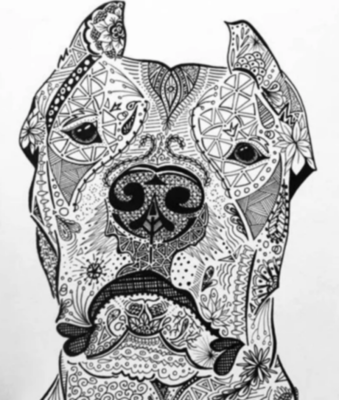
Antonio was only 18 years old when he decided to develop a breed specially suited to hunt wild boar. He shared his vision with his brother, Agustin, a year younger, and together they worked to create a new dog breed that possessed the courage of the Bull Terrier and the Fighting Dog of Cordoba, the hunting instincts of the Pointer and the Irish Wolfhound, the gentleness of a Boxer, the size and strength of the Great Dane and the Dogue de Bordeaux, the white coat and size of the Great Pyrenees, and the Spanish Mastiff to fix size and type – all breeds that the brothers recruited for their breeding program.
Family wealth helped the brothers some of the way, and certainly the kennel help their father arranged to care for the dogs was a boost, but the brothers used their pocket money to buy food and other items for the dogs. Antonio, the head of the spear of this effort, knew exactly what he wanted, and long before the brothers’ breed was “finished,” he wrote its breed standard and sketched drawings of his ideal dog. The year was 1928, and the standard that Antonio wrote was for the Dogo Argentino.
This might be a good time to mention that while it’s tempting to assume that these were rich idle boys looking for a dog that would help them hunt boars in their spare time, there is another perspective worth considering. These young men lived in Argentino, and in the beginning of the 20th century in that country, wild boars had been imported for sport, the prickly animals largely controlled.
Over time, however, what seemed like a good idea at the time became a serious issue. Landowners started to abdicate their duties to maintain fences, largely because it cost money at a time they were facing financial reversals. The boars got through the fences, ran all over the countryside, and found saucy domestic boars with with to breed. Boar numbers got out of control and destroyed orchards, crops, and farmlands.
An ancient tradition from the Middle Ages was resurrected: The Monteria Criolla, or hunting on horseback with only knives and dogs according to the traditions of the country. Within the context of the time, Antonio and Agustin’s vision for a boar hunting dog had merit.
There was, however, another aspect to Antonio’s plan. He hated to see the the Fighting Dog of Cordoba become extinct, a breed that was the descendants of the 16th-century Fila and Presa breeds, something that ultimately did happen, nevertheless. Antonio had admired this breed’s stamina and fearlessness, but not its aggression. His goal was to save the FDC from extinction, but create a new and improved working breed at the same time.
By 1947, the Dogo Argentino was mostly fixed in terms of type, and the brothers were still under forty years old. Antonio had become a doctor, but he would not see his breed become nationally recognized. He and a friend were murdered in 1956 while bird hunting, perhaps one of the few times they had not taken along a Dogo. Their murders, thought to be robbery related, remained unsolved.
Image: Dogo Argentino by Brooke of CopperDogShop may be purchased here.
